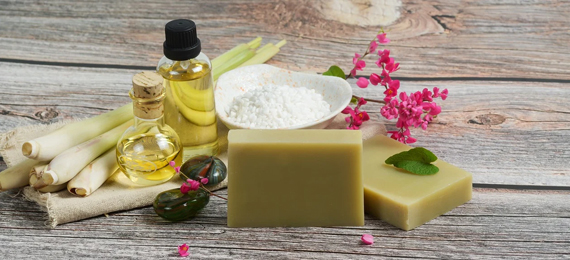
Keeping your hands clean is one of the major things to follow. Throughout the day, we touch a lot of objects and surfaces which might carry hazardous germs. When you touch those objects you pick up those germs that can cause diseases like diarrhea, stomach ache, etc. So, it is advised not to touch your nose, mouth, and face frequently without washing your hands with soap as you might get infected. You cannot assume that your hands are germ-free, just because they are not visible to the bare eyes.
Remember, rinsing your hands with water without using soap is of no use as you will still carry those harmful germs on your hands if you are not using soap. Using soap during handwashing is the best way to wash away the germs that are sticking to your hands and one of the major uses of soap is that it restricts the spread of germs right away.
What Are Soaps?
According to Wikipedia, soaps are salt of fatty acids that are used for a variety of cleaning purposes—the invention of soap dates back to 2800 B.C. by Babylonians. Early soaps were made by combining animal and vegetable fats. Over the years the process of preparing soaps evolved and liquid soaps were patented by William Sheppard in 1865.
1. Who Was the First to Invent Soap?
- A. Babylonians
- B. Egyptians
- C. Romans
- D. Mayans
How Does Soap Work?
Soaps do not kill the germs, instead, they wash away the germs that are sticking to your hands. But how? Soaps usually consist of carbon, hydrogen, and oxygen atoms. The chain of atoms are both lipophilic (attracted to oils) and hydrophilic (attracted to water). So when you use soap, it lathers up and the lipophilic side picks up the oil and the hydrophilic side washes off the dirt following the water. So always remember that water alone cannot help wash away the dirt, germs, and oil off your hands as it does not have the tendency to mix with oil. One of the greatest benefits of using soap is that it helps remove the microbes and dirt sticking to your hands leaving your hand germ-free which could possibly control many health issues and infections that are caused by viruses and bacteria.
Also Read: How Does Hand Sanitizer Work
The History of Soap
Soap, a seemingly ordinary cleaning agent, boasts a rich history dating back millennia. Let’s embark on a journey through time to explore its fascinating evolution:
Early Beginnings (2800 BC – 600 BC):
The earliest evidence of soap-like materials comes from ancient Mesopotamia (present-day Iraq). Around 2800 BC, clay tablets from Sumer contained inscriptions suggesting the boiling of fats or oils with ashes, a rudimentary form of soap production.
Egyptians (around 1550 BC) are documented using a mixture of animal fats or vegetable oils with a natural alkali like soda ash for cleaning purposes.
The Phoenicians (around 600 BC), known for their seafaring trade, are believed to have produced soap from animal fats and tree ash.
The Roman Legend and Beyond (500 BC – 7th Century AD):
A Roman legend attributes the origin of soap to Mount Sapo, where animal fat from sacrifices mixed with wood ash from fires, creating a natural cleaning substance. Although the legend may not be factual, it highlights the potential for early soap discovery through natural processes.The use of soap continued to spread throughout the Roman Empire and beyond.
What are the Types of Soaps?
- Bar Soap:
- Liquid Soap
- Castile Soap
- Medicated Soap
- Exfoliating Soap
- Moisturizing Soap
- Transparent Soap
- Natural Soap
- Antibacterial Soap
When to Use Soap
- Before and after using the toilet.
- Before eating, cooking, or handling eatables.
- After sneezing in your hands.
- After handling sick people.
- After physical contact with your pets.
- After handling garbage.
How to Wash Your Hands with Soap
- Wet your hands with water and apply a good amount of soap on your hands.
- Lather it up, by rubbing your hands as it helps lift up the dirt and germs on your hands.
- Make sure to reach every corner of your hands including the area around your nails and between your fingers.
- It is recommended to wash your hands for at least 20 seconds.
- Rinse your hands with water completely.
- Dry your hands with a clean towel or tissue.
How many times do we use soap in a day?
There’s no single answer to how many times you use soap in a day because it depends on several factors:
Personal hygiene habits: People shower or bathe at varying frequencies. Some may wash their hands very frequently throughout the day, while others might do so less often.
Occupation: Certain professions, like healthcare workers or mechanics, may require more frequent handwashing due to potential exposure to germs or dirt.
Daily activities: If your day involves a lot of physical activity or working with messy materials, you’ll likely need to use soap more often for handwashing or showering.
Final Word :
Soap’s unique molecular structure bridges the gap between water and dirt or oil, lifting dirt and germs from surfaces for easy rinsing. This simple yet effective process has made soap a cornerstone of hygiene for centuries, ensuring cleanliness and health.